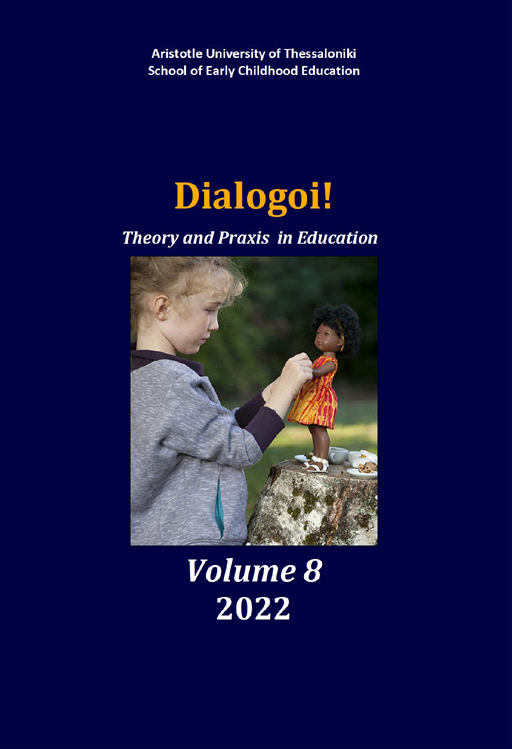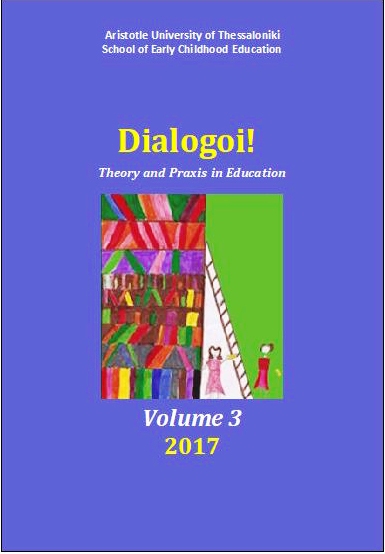Puppetry handling for meaning making: a framework to analyze multimodal interactions of children with refugee experience

Abstract
Over the last years Europe has experienced the greater mass movement since the Second World War. Nearly a million displaced people fleeing home due to conflicts, economic devastation, human rights violation and persecution, crossed Greece seeking a better future in the Western and Northern European countries. In most cases, societies mobilized and responded to the so called ‘refugee crisis’ by supporting refugees in many aspects, such as children’s education. In Greece since October 2016, many refugee children attended the Greek educational system. Needless to say, that education for refugee children who have missed years of schooling or had no previous access to it proved to be a rather complicated issue, which was aggravated by the transitory stage of their living. Organizing catch-up programs to meet the needs of the children in education, while at the same time empowering them to overcome trauma and stress was imperative. Therefore, prior to and in parallel to the official courses in schools, informal education activities took place in many refugee camps implemented by Universities, NGOs and volunteers. In this context, a six months’ project called “Literacy through Drama” was designed taking into account that a collaborative environment that is devoid of fear of failure would facilitate children’s schooling and could result in stronger linguistic outcomes (Krashen, 1988˙ Payne, 2011). The project, which was implemented in a reception class in a public school of Volos (Greece), aimed at facilitating children’s literacy by creating an opportunity for authentic situations in a more playful and less schoolish manner (Almond, 2005˙ Calvert & Sheen, 2015). A large part of the project was carried out through puppets. Their use, in a setting of learning interaction, served as a mediating tool to engage children and encourage them to co-operate, to express themselves in a creative way and to communicate in many modes overcoming language barriers. Through puppets’ animation, children were empowered to express themselves in many modes and to produce stronger linguistic outcomes. Video recordings and field notes were used to collect data.
The paper introduces a methodological framework, adapted by Norris (2004), for understanding students’ interactions with / and through puppetry. A video recording of a young girl using a persona doll was analyzed with the aid of a grid designed specifically for the purpose of the research. The child used a variety of representational modes to communicate, such as languaging, facial and body expressions, gestures and gaze while animating her puppet. Based on the data of the research, handling an object – in this case, a puppet- could be considered as a mode used by the child to provide meaning. Moreover, the methodological framework could be used to provide insights on the ways children with refugee experience handle puppets to covey meanings, to present their ‘voices’ and communicate.
Article Details
- How to Cite
-
Παπαδοπούλου Μ., Βίτσου Μ., & Γκανά Ε. (2022). Puppetry handling for meaning making: a framework to analyze multimodal interactions of children with refugee experience. Dialogoi! Theory and Praxis in Education, 8. https://doi.org/10.12681/dial.28249
- Issue
- Vol. 8 (2022)
- Section
- Scientific columns

This work is licensed under a Creative Commons Attribution-NonCommercial-ShareAlike 4.0 International License.
Authors who publish with this journal agree to the following terms:
- Authors retain copyright and grant the journal right of first publication with the work simultaneously licensed under a Creative Commons Attribution Non-Commercial License that allows others to share the work with an acknowledgement of the work's authorship and initial publication in this journal.
- Authors are able to enter into separate, additional contractual arrangements for the non-exclusive distribution of the journal's published version of the work (e.g. post it to an institutional repository or publish it in a book), with an acknowledgement of its initial publication in this journal.
- Authors are permitted and encouraged to post their work online (preferably in institutional repositories or on their website) prior to and during the submission process, as it can lead to productive exchanges, as well as earlier and greater citation of published work (See The Effect of Open Access).



